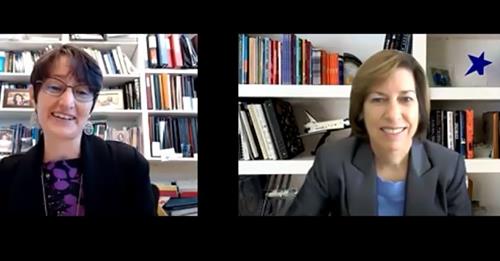
by Tiffany Lee, Office of Research and Economic Development
Ellen Ochoa vividly remembers some of her final moments in outer space. They came in 2002 at the end of a 12-day mission during which Ochoa, NASA’s first Latina astronaut, helped construct the International Space Station, a large spacecraft that’s been orbiting Earth since 2000.
Ochoa and six crew members were preparing to leave the ISS, leaving behind three colleagues who would continue building the ISS laboratory. Ochoa, having logged four shuttle missions and nearly 1,000 hours in space during her career and with opportunities in leadership and administration ahead, knew she was likely experiencing microgravity for the last time.
Backing away from the ISS, she could see Earth lurking behind the station. It was still nighttime there, and Ochoa could see an aurora – the brilliant light shows in the sky often called northern or southern lights – dancing along Earth.
“There were green strands and red filaments,” recalled Ochoa. “I never in my life thought I’d be in the position to see that, to be part of this amazing endeavor.”
Ochoa chronicled some of the experiences that brought her to that moment during a virtual keynote address she delivered Nov. 5 to mark the University of Nebraska-Lincoln’s Women in Research Day. The event, co-sponsored by the Office of Research and Economic Development and the Association of Women in Science, was part of Nebraska Research Days, the university’s annual celebration of research, scholarly and creative activity.
Read more:
https://research.unl.edu/blog/astronaut-ochoa-headlines-women-in-research-day-at-unl/